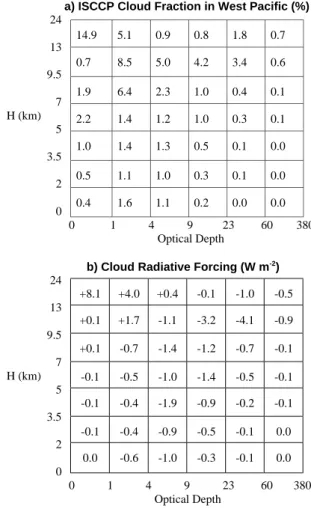Tropical cirrus and water vapor: an effective Earth infrared iris feedback?
Texto
Imagem




Documentos relacionados
Assessing the longitudinal-vertical distribution of tropical convection between latitudes 20 ◦ N–20 ◦ S using the “convective cloud top PDFs” (left column) and monthly
In order to study the sensitivity of this eect on the radiative characteristics of the ice cloud, two types of additional ice clouds were modelled: cirrus and contrails, the
Among those, we discuss the impacts of observation geometry, thin cirrus in multilayered and single layered cloud systems, supercooled liquid droplets, aerosols, fractional cloud
Figure 2 shows that when upper-level cirrus is absent, an approximate doubling and tripling of the average number concentration of crystals in visible cloud is predicted in the high
Box model simulations of an uplifting and adiabatically cooling cloud of aerosol have been performed in order to study the transition between cirrus formation dominated by
Figure 20 shows the vertical distribution of the time- and area-averaged condensation and the conversion of cloud liquid water to rain (i.e. autocon- version + collection of
tropopause temperature determines the balance between cirrus cloud ice and water vapor at 100 hPa so that total water stays roughly constant. The seasonal cycle of wa- ter vapor
In summary, changes in ice crystal number concentrations, caused by either homo- geneous freezing or heterogeneous freezing, change the TOA radiative fluxes through three e ff ects: